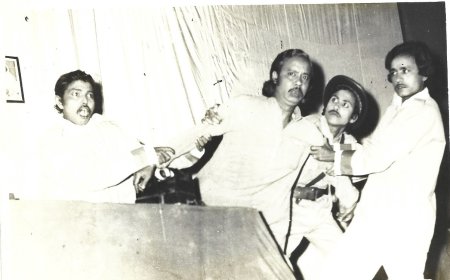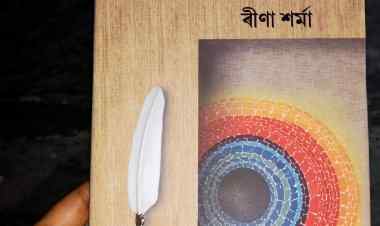Play Review: BHOBISHYOTER SMRITI (Memories of the Future)
Dr. Shoma A. Chatterji, a renowned Indian author and film critic, provides an analysis of the Bengali drama titled "Bhobishyoter Smriti," which translates to "Memories of the Future" in this critique.
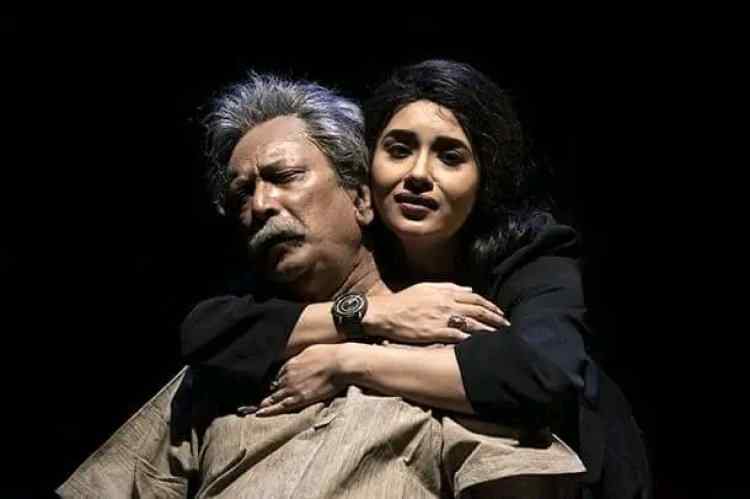
Dr. Shoma A. Chatterji, noted Indian author and film critic, reviews the
Bengali play BHOBISHYOTER SMRITI meaning MEMORIES OF THE FUTURE.
Bhobishyoter Smriti (Memories of the Future) is the newest production under the banner of Sayak and its founder-director Meghnad Bhattacharya who has been doing theatre since he was just 16 years old. His group Sayak, celebrates its 50th year this year. Bhobishyoter Smriti was premiered in December last year. Every play of Sayak, be it inspired from original literature – Bengali, Indian or International, or organic and original has always been unique in choice of subject, treatment, aesthetics and acting.
In most of his productions, Meghnad not only directs the play but also plays a major role in it. Bhobhishyoter Smriti is no exception. The play opens in a very dilapidated, heritage structure somewhere in Bengal which has seen better days but is now in the doldrums with three major members peopling it. One of this is the patriarch, the nonagenarian Debangshu (Meghnad Bhattacharya), his septuagenarian son Debaprotim (Dhurjati Prasad De) and an elderly lady Lakshmi who looks after the needs of the two men with off-hand household help and appears never to have married.
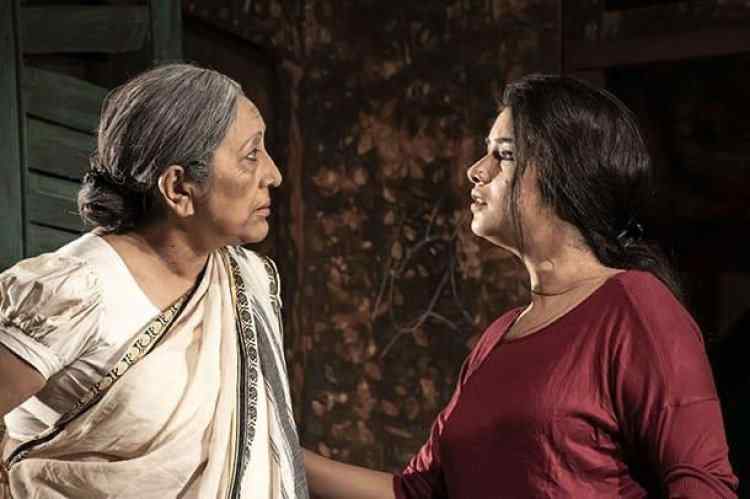
The mansion, they say, is 300 years old but Debangshu insists on living in it, clutching at his memories of days and years bygone, his nostalgia wrapped between memory and forgetting and talking mostly of his past. He is eagerly waiting for the visit of his great grand-daughter Mili (Amrita Mukhopadhyay) who is flying in from her home abroad to meet her maternal grandfather Debapratim and great grandfather Debangshu who appears to be less doddering than he appears to be in physical terms. Her young and Westernised mind is spilling over with questions she is seeking answers to. Will she get them? Or, won’t she?
The impressive set design by Uttam De at once strikes the audience with something quite perceptive and intriguing to follow. Mili tries her best to make sense out of the somewhat senseless meanderings of her great grandfather mainly involving questions around the missing female members of the entire family including her mother Debolina (Anusuya Bhattacharya De) who went missing and Mili has been trying to solve this mystery right through her growing years. The set of the front portion of the dilapidated mansion, lit imaginatively to create a lasting impression of decadence, age and a remote past which persists even in the present as the mansion demands renovation which Debangshu is not quite willing to lend himself to. The two old men, Debangshu and his son are ;ole relics who have stepped out of the walls of the mansion and might disappear behind them any minute. But they don’t because Mili’s questions make them wary about the consequences of her findings when and if she finds them.
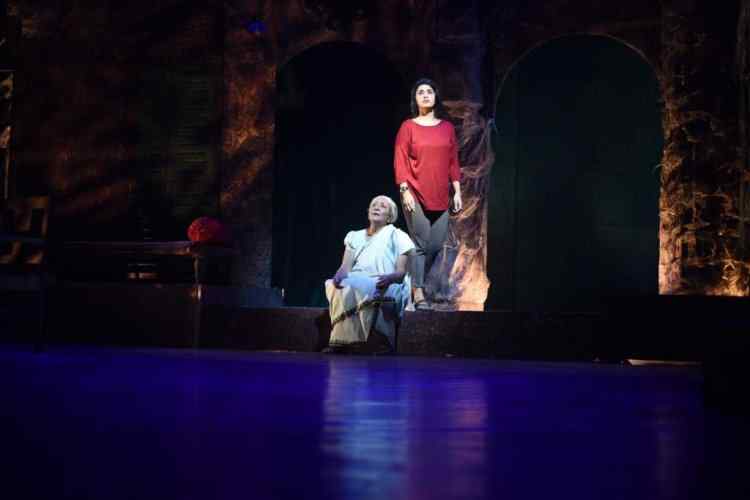
Mili, dressed in Western attire and speaking like a foreign-educated, impressive young woman, sticks out like a sore thumb but her nature makes the two old men warm up to her till she pushes through her very uncomfortable questions around the women in the family beginning with Debangshu’s wife. Whatever happened to them and why no one is willing to tell her what happened to Saudamini, Maya, Damini and the rest? Why does not one talk about them? Why are they rendered so ‘invisible’ where no one seems to know whether they are dead or alive or have gone missing?
From a story about a doddering old 90+ man who came as a refugee to settle here and build this home, it switches over to the gender question opening a can overfilled with worms that lay buried till Mili decided to open it. And the “worms” or rather, the “women” begin to appear on stage for Mili to solve the jigsaw puzzles of their lives and their deaths. This fine blend of the real and the surreal, of lives lived in suppression, oppression, marginalisation and torture either initiated by the men or engineered by them, throws up the tragic story of these ‘expendable’ women’s lives offering just a microcosm of what happened to women down the years within and behind the hidden walls of the dilapidated heritage mansion, its 300-year-old history founded on tears, tragedy and death.
Meghnad Bhattacharya has inculcated the rare gift of blending life with death, of merging the real with the surreal when we see these women from the past emerge on stage in the form of spirits to substantiate what Mili has been suspecting all along. It invests the entire performance with the eerie feeling of death and life co-existing within the same framework and the proscenium is neatly divided into two parts, mainly through the right light effects to demarcate the dead with the living. Excellent lighting though the name of the person responsible is not found in the credits.
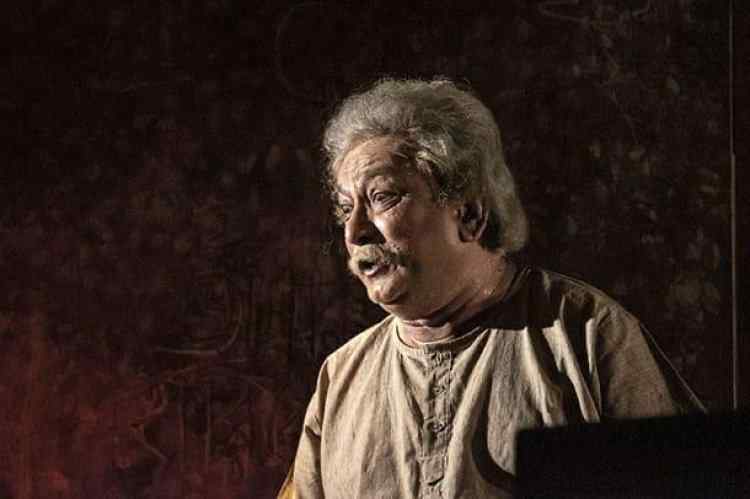
The entire cast throws up an extremely good example of rapport among themselves, an electrically charged energy led by Meghnad himself as the doddering old Debangshu, supported by an extremely talented and committed acting cast. The counterpoint thrown up by the doddering old Debangshu and the sprightly, intelligent and smart Mili creates a beautiful metaphor on the lapse of time and what it can do to two people belonging to different time and space zones suddenly thrown together against an ancient old setting.
Samir Kumar De’s costume design is just fitting into the period ambience of the play though it is set in contemporary times. Mili dreams of setting these wrongs right with her socially aware and liberated mindset and the play ends on this positive note. But does it? That is left to the audience. Dhurjoti Prasad De’s sound design adds to the varied dimensions of the play as a narrative and a theatrical device, both.
The only issue this critic found is in the overlong footage of the play that spans two clock hours of performance time. It is tough for those who travel long distances to watch a play in the evenings.
***
What's Your Reaction?









































